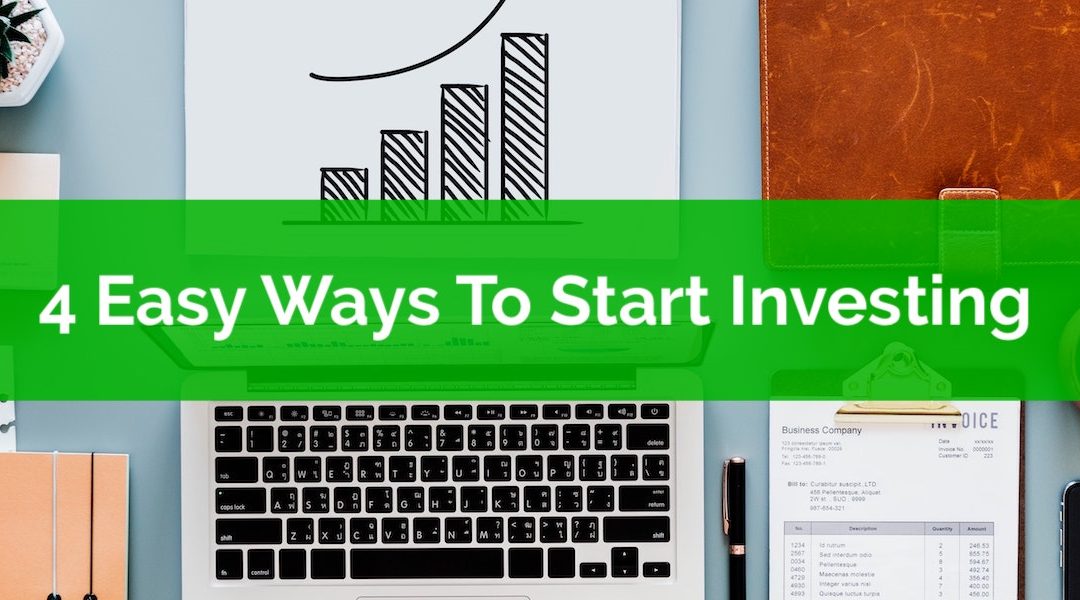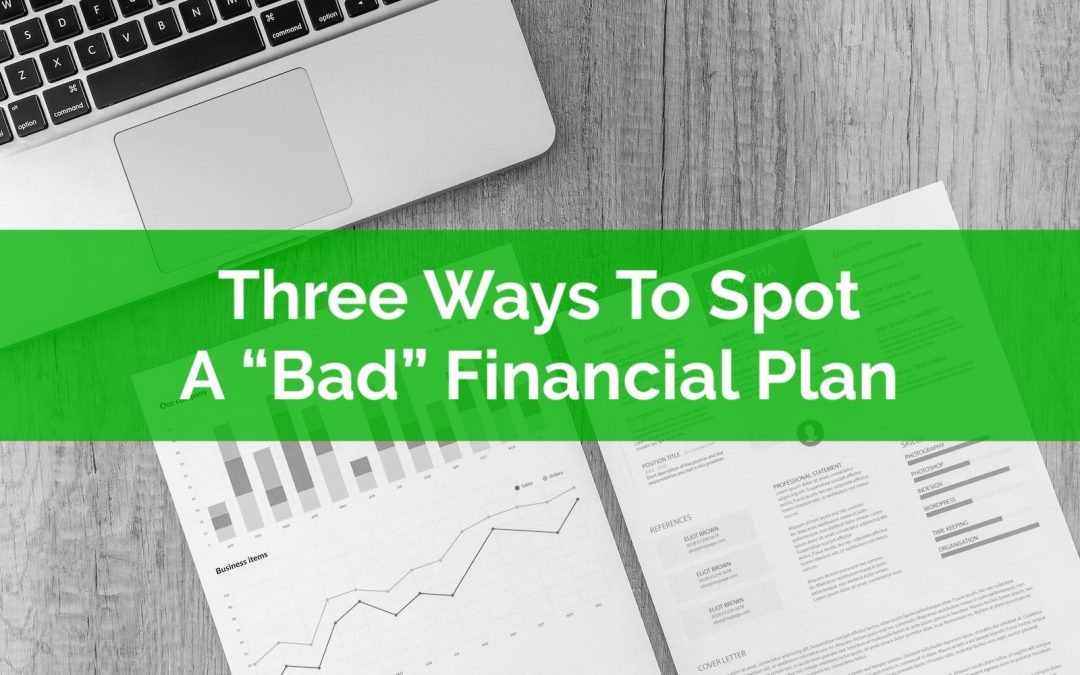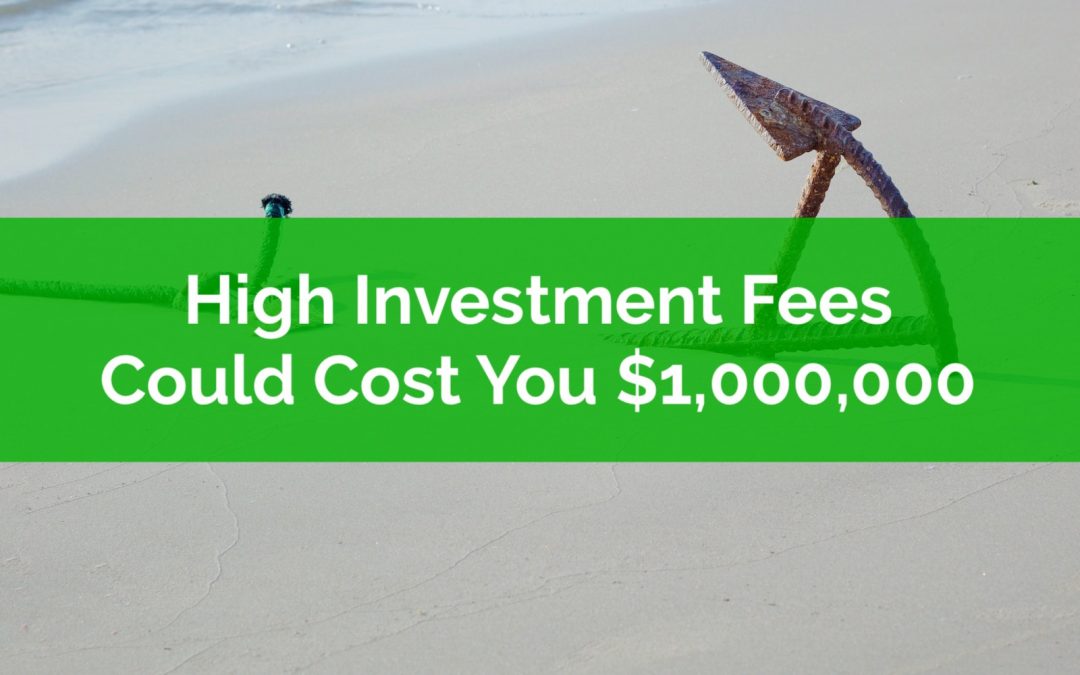“Welcome to the PlanEasy blog! We make personal finance easy.
Thanks for visiting.”
– Owen

4 Easy Ways To Start Investing
Investing is one of the best ways to build wealth. When you invest, you buy a small piece of a company. And as a part owner of that company, you get a portion of the profit they create. This profit can be distributed to shareholders in the form of cash dividends every few months (ie. Coke) or it can be invested back into the company to help is grow even faster (ie. Netflix).
When you invest you put your money to work. Rather than letting your money sit in a high-interest savings account, where it does next to nothing (earning minimal interest, sometimes less than inflation) by investing you give your money a real job.
When you invest, you get a higher return but this return isn’t free. A higher return comes with higher risk. Investing is risky. When you invest it’s possible to lose a big chunk of your savings over a few years, months, or even days. The benefit is that over the long run you can earn a better return than your bank account, and this is important when you have long-term goals like financial independence or retirement (Note: you should never invest when you’re saving for short-term goals, for short-term goals a high interest savings account or GIC are best).
What is the best way to invest? That depends on your specific circumstances. It depends on how much time you have, how involved you want to be, how much you want to pay in fees etc. Investing today is easier than ever. There are new and easy ways to invest in a highly-diversified portfolio of stocks and bonds.
Which method you choose will depend on a few factors…

Three Ways To Spot A “Bad” Financial Plan
As an advice-only financial planner we often see financial plans created by the big financial institutions. We provide a second opinion to new clients who have created one of these financial plans. These clients have received a financial plan from their investment advisor, or sometimes a separate financial planner within the bank, but they’re skeptical of the results and the recommendations.
Often, they want more detail, more discussion, more process, more scenarios, more peace of mind etc. They want an unbiased second opinion.
Now let me preface this blog post by saying there are many excellent financial planners at the big banks. In fact, many have moved into advice-only financial planning where they can spend more time doing financial planning instead of selling products. The problem is that, for the most part, the financial services industry doesn’t prioritize financial planning.
Planning is not their product, investments, insurance, and mortgages are their product, and unfortunately, financial planning is sometimes just barely good enough to secure a new client or keep an existing one. There is often a lack of tools, time, or process to create a really detailed financial plan.
So, when reviewing a generic “bank plan” and helping clients build a new one there are a few things to look out for. These things are signs that perhaps the financial plan needs a bit more work.
There are three ways to spot a “bad” financial plan.

High Investment Fees Could Cost You $1,000,000+
Imagine paying $1,000,000 in investment fees? It seems crazy, doesn’t it? There aren’t many things I could imagine spending that much money on, and investment fees would certainly be at the bottom of the list. And yet, there are millions of Canadians who could end up paying this much, or possibly more, in investment fees over the course of their life.
If given an extra $1,000,000, what would you spend that money on? Probably not investment fees. I would probably spend that money on a vacation, a cottage, a reno, or a hundred other things before choosing to spend extra money on investment fees.
But for a mutual fund investor in Canada, over time, high investment fees could easily add up to $1,000,000+.
If you don’t believe me, or just want to see the details, lets take a look at the numbers together…

Owen Winkelmolen
Advice-only financial planner, CFP, and founder of PlanEasy.ca
“Welcome to the PlanEasy blog! We make personal finance easy.
Thanks for visiting.”
– Owen
New blog posts weekly!
Tax planning, benefit optimization, budgeting, family planning, retirement planning and more...

4 Easy Ways To Start Investing
Investing is one of the best ways to build wealth. When you invest, you buy a small piece of a company. And as a part owner of that company, you get a portion of the profit they create. This profit can be distributed to shareholders in the form of cash dividends every few months (ie. Coke) or it can be invested back into the company to help is grow even faster (ie. Netflix).
When you invest you put your money to work. Rather than letting your money sit in a high-interest savings account, where it does next to nothing (earning minimal interest, sometimes less than inflation) by investing you give your money a real job.
When you invest, you get a higher return but this return isn’t free. A higher return comes with higher risk. Investing is risky. When you invest it’s possible to lose a big chunk of your savings over a few years, months, or even days. The benefit is that over the long run you can earn a better return than your bank account, and this is important when you have long-term goals like financial independence or retirement (Note: you should never invest when you’re saving for short-term goals, for short-term goals a high interest savings account or GIC are best).
What is the best way to invest? That depends on your specific circumstances. It depends on how much time you have, how involved you want to be, how much you want to pay in fees etc. Investing today is easier than ever. There are new and easy ways to invest in a highly-diversified portfolio of stocks and bonds.
Which method you choose will depend on a few factors…

Three Ways To Spot A “Bad” Financial Plan
As an advice-only financial planner we often see financial plans created by the big financial institutions. We provide a second opinion to new clients who have created one of these financial plans. These clients have received a financial plan from their investment advisor, or sometimes a separate financial planner within the bank, but they’re skeptical of the results and the recommendations.
Often, they want more detail, more discussion, more process, more scenarios, more peace of mind etc. They want an unbiased second opinion.
Now let me preface this blog post by saying there are many excellent financial planners at the big banks. In fact, many have moved into advice-only financial planning where they can spend more time doing financial planning instead of selling products. The problem is that, for the most part, the financial services industry doesn’t prioritize financial planning.
Planning is not their product, investments, insurance, and mortgages are their product, and unfortunately, financial planning is sometimes just barely good enough to secure a new client or keep an existing one. There is often a lack of tools, time, or process to create a really detailed financial plan.
So, when reviewing a generic “bank plan” and helping clients build a new one there are a few things to look out for. These things are signs that perhaps the financial plan needs a bit more work.
There are three ways to spot a “bad” financial plan.

High Investment Fees Could Cost You $1,000,000+
Imagine paying $1,000,000 in investment fees? It seems crazy, doesn’t it? There aren’t many things I could imagine spending that much money on, and investment fees would certainly be at the bottom of the list. And yet, there are millions of Canadians who could end up paying this much, or possibly more, in investment fees over the course of their life.
If given an extra $1,000,000, what would you spend that money on? Probably not investment fees. I would probably spend that money on a vacation, a cottage, a reno, or a hundred other things before choosing to spend extra money on investment fees.
But for a mutual fund investor in Canada, over time, high investment fees could easily add up to $1,000,000+.
If you don’t believe me, or just want to see the details, lets take a look at the numbers together…
Join over 250,000 people reading PlanEasy.ca each year. New blog posts weekly!
Tax planning, benefit optimization, budgeting, family planning, retirement planning and more...
Join over 250,000 people reading PlanEasy.ca each year. New blog posts weekly!
Tax planning, benefit optimization, budgeting, family planning, retirement planning and more...
